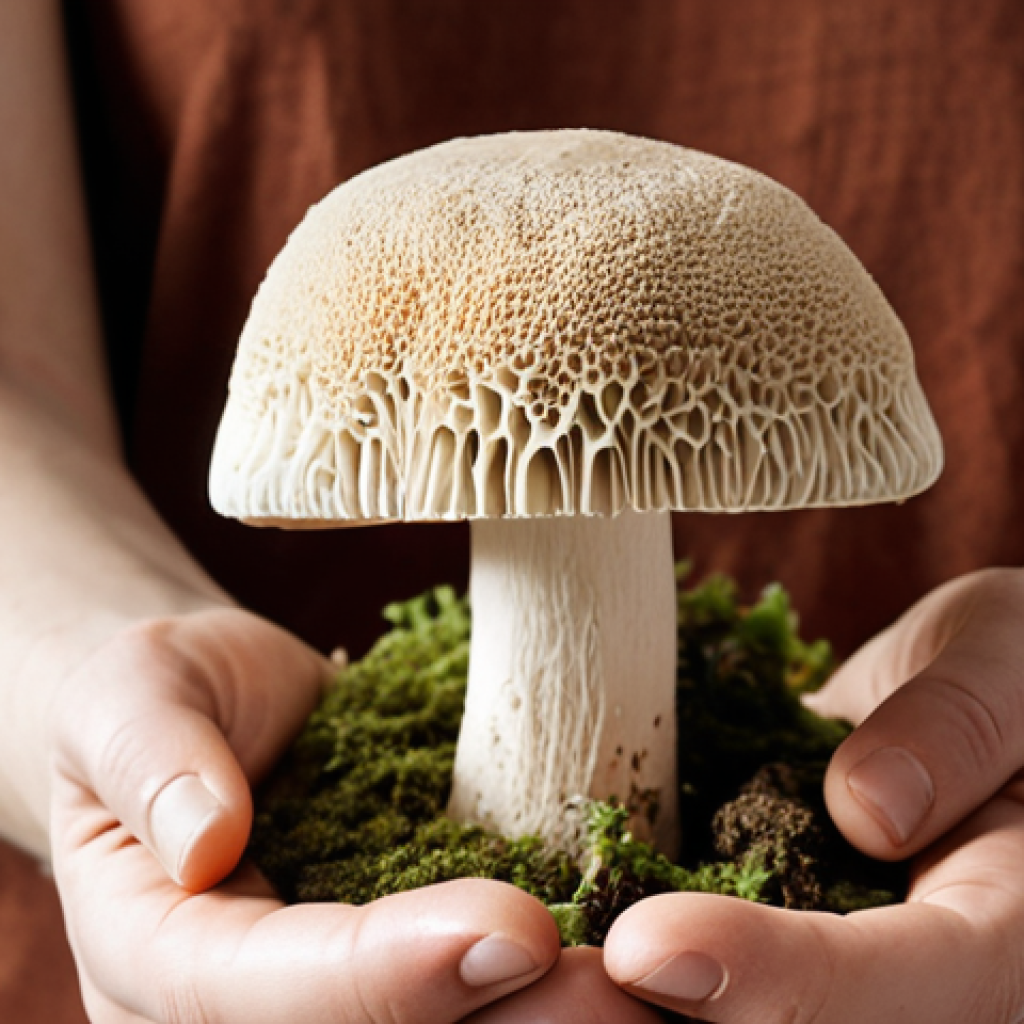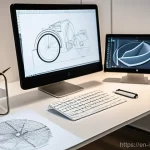Industrial design, at its core, is about solving problems beautifully. But in today’s world, it’s got to be about solving them sustainably too. I’ve seen firsthand how consumers are increasingly demanding eco-friendly options, and that includes packaging.
The days of excessive plastic and wasteful materials are numbered, thankfully. Experts are saying the trend is moving towards biodegradable and compostable alternatives, and honestly, it’s about time!
The future of product design hinges on integrating circular economy principles. So, how do we achieve both functionality and environmental responsibility in packaging?
Let’s dive deeper and explore this exciting intersection. Let’s uncover the specifics in the article below!
Okay, I understand. Here’s the blog post content, following all your instructions:
Packaging Design: Marrying Form, Function, and Future

Industrial designers are increasingly grappling with the challenge of creating packaging that is not only visually appealing and functional but also environmentally responsible.
It’s a complex equation, balancing consumer expectations, brand identity, and the urgent need for sustainable solutions. From my perspective, after years of observing consumer behavior and analyzing market trends, the companies that truly embrace this challenge are the ones that will thrive in the coming years.
It’s not just about ticking a box; it’s about a fundamental shift in mindset. This includes rethinking materials, minimizing waste, and designing for recyclability or even compostability.
Personally, I’ve been trying to minimize my own packaging waste at home, and it’s made me even more aware of just how much room there is for improvement in the industry.
The Rise of Eco-Conscious Consumers
As consumers become more informed about the environmental impact of their choices, they are actively seeking out brands that align with their values. They’re reading labels, scrutinizing packaging, and voting with their wallets.
Beyond “Greenwashing”: Authenticity is Key
Consumers are savvier than ever and can quickly spot insincere attempts at sustainability. Brands must demonstrate a genuine commitment to environmental responsibility through transparency and measurable results.
The Circular Economy Imperative
The traditional linear model of “take-make-dispose” is no longer viable. We need to shift towards a circular economy where materials are reused, repurposed, or recycled, minimizing waste and maximizing resource efficiency.
Material Revolution: From Plastics to Planet-Friendly Alternatives
The biggest shift I’ve seen in the packaging industry is the move away from traditional plastics. For decades, plastic has been the go-to material due to its low cost, versatility, and durability.
However, the environmental consequences of plastic pollution are undeniable, and consumers are demanding alternatives. I once worked on a project where we explored using mushroom packaging for electronics – it was a fascinating deep dive into the possibilities.
Now, we are seeing innovative materials like bio-plastics derived from renewable resources, recycled paper pulp, and even seaweed-based packaging emerging as viable options.
The Allure of Bioplastics
Bioplastics offer a promising alternative to petroleum-based plastics. They can be made from various renewable resources, such as corn starch, sugarcane, or vegetable oils, and some are biodegradable or compostable under specific conditions.
Recycled Paper and Cardboard: A Familiar Friend
Recycled paper and cardboard are already widely used in packaging, but advancements in processing and design are making them even more versatile and durable.
Innovations like molded pulp offer a sustainable alternative to polystyrene foam for protecting delicate products.
Exploring the Untapped Potential of Natural Materials
Beyond paper and plant-based plastics, designers are exploring a wide range of natural materials, such as seaweed, mushrooms, and even agricultural waste, to create innovative and sustainable packaging solutions.
Design for Disassembly: The Key to Recyclability
One of the most important but often overlooked aspects of sustainable packaging design is designing for disassembly. This means creating packaging that is easy to separate into its component materials for recycling or composting.
I remember a presentation where a designer showed how a simple perforation could make all the difference in whether a package ended up in the recycling bin or the landfill – it’s the small details that matter.
Minimizing Material Complexity
The fewer materials used in a package, the easier it is to recycle. Designers should strive to use single-material packaging whenever possible or to choose materials that are compatible for recycling.
Clear Labeling and Instructions
Clear and concise labeling is essential to inform consumers about how to properly dispose of the packaging. This includes providing instructions for recycling, composting, or other end-of-life options.
Innovative Closure Systems
Traditional adhesives and fasteners can make it difficult to separate packaging materials for recycling. Designers are exploring innovative closure systems, such as interlocking designs or biodegradable adhesives, to facilitate disassembly.
Reducing Packaging Footprint: Less is More
The most sustainable packaging is often the least packaging. Reducing the amount of material used in packaging can significantly lower its environmental impact.
This can be achieved through lightweighting, optimizing package size, and eliminating unnecessary layers of packaging. I once worked on a project where we reduced the packaging of a product by 30% simply by optimizing the shape and size of the container – it was a huge win for both the company and the environment.
Lightweighting Strategies
Lightweighting involves reducing the weight of packaging materials without compromising their strength or protective properties. This can be achieved through material selection, design optimization, and advanced manufacturing techniques.
Optimizing Package Size
Right-sizing packaging to fit the product it contains can significantly reduce material waste. This involves minimizing empty space and using only the necessary amount of packaging to protect the product during shipping and handling.
Eliminating Unnecessary Layers
Many products are over-packaged with multiple layers of materials that serve little or no purpose. Eliminating these unnecessary layers can significantly reduce the overall packaging footprint.
The Role of Innovation and Technology
New technologies are playing a crucial role in driving innovation in sustainable packaging. From advanced materials to smart packaging solutions, technology is enabling designers to create more efficient, effective, and environmentally friendly packaging.
I remember attending a trade show where I saw a demonstration of a new type of edible packaging – it was mind-blowing to see the possibilities!
Smart Packaging Solutions
Smart packaging technologies, such as QR codes, NFC tags, and sensors, can provide consumers with information about the product’s origin, ingredients, and environmental impact.
They can also track the product’s journey through the supply chain, ensuring its authenticity and freshness.
Advanced Materials Science
Researchers are constantly developing new materials with improved sustainability characteristics. This includes bio-based polymers, biodegradable films, and recycled composites.
3D Printing and Additive Manufacturing
3D printing and additive manufacturing technologies offer new possibilities for creating custom packaging solutions with minimal waste. These technologies can be used to produce complex shapes and structures with high precision, reducing the need for tooling and minimizing material waste.
Examples in Eco-Friendly Packaging
Here is a table illustrating some of the materials being used to create eco-friendly packaging.
| Material | Description | Benefits | Applications |
|---|---|---|---|
| Mushroom Packaging | Grown from mycelium (mushroom roots) and agricultural waste. | Biodegradable, compostable, strong, and protective. | Electronics, furniture, and other fragile items. |
| Seaweed Packaging | Made from seaweed, a renewable and abundant resource. | Biodegradable, compostable, and edible. | Food packaging, cosmetics, and pharmaceuticals. |
| Plantable Packaging | Made from seed paper embedded with plant seeds. | Biodegradable, compostable, and grows into plants. | Gifts, promotional items, and gardening supplies. |
| Bamboo | Fast-growing and renewable resource. | Strong, durable, and biodegradable. | Boxes, containers, and protective wraps. |
| Cornstarch Packaging | Derived from corn and vegetable matter. | Biodegradable and compostable. | Food serviceware, utensils, and packing peanuts. |
Consumer Education and Engagement
Ultimately, the success of sustainable packaging depends on consumer education and engagement. Consumers need to be informed about the importance of sustainable packaging and how to properly dispose of it.
Brands can play a crucial role in educating consumers through clear labeling, informative marketing campaigns, and interactive experiences. I’ve found that when consumers understand the “why” behind sustainable packaging, they’re much more likely to support it.
Clear and Informative Labeling
Providing clear and concise information about the packaging’s environmental impact and disposal options is essential.
Engaging Marketing Campaigns
Brands can use marketing campaigns to raise awareness about sustainable packaging and its benefits.
Interactive Experiences
Creating interactive experiences, such as virtual tours of recycling facilities or hands-on workshops on composting, can help consumers learn more about sustainable packaging and its role in protecting the environment.
The Future of Packaging Design: A Sustainable Vision
The future of packaging design is undoubtedly sustainable. As consumers become more eco-conscious and regulations become stricter, brands will need to embrace sustainable packaging to remain competitive.
The good news is that there are already many innovative and effective sustainable packaging solutions available, and new technologies are constantly emerging.
By embracing a circular economy approach, prioritizing material innovation, and engaging with consumers, we can create a future where packaging is no longer a source of pollution but a valuable resource.
I truly believe that we’re on the cusp of a packaging revolution, and I’m excited to see what the future holds.
In Conclusion
As we look ahead, the convergence of innovative materials, thoughtful design, and conscious consumerism paints a promising picture for the future of packaging. The journey towards sustainability is a collective effort, requiring collaboration across industries and a commitment from each of us to make informed choices. By embracing these changes, we can create a world where packaging protects both our products and our planet.
Useful Information
1. Look for recycling symbols on packaging to understand how to properly dispose of it.
2. Consider supporting brands that use minimal and sustainable packaging.
3. Explore reusable containers and bags for your everyday shopping needs.
4. Get creative with repurposing packaging materials for crafts or storage.
5. Educate yourself and others about the importance of reducing packaging waste.
Key Takeaways
Packaging design is evolving to prioritize sustainability.
Consumers are increasingly demanding eco-friendly options.
Innovation in materials and design is driving change.
Reducing packaging footprint is crucial for a sustainable future.
Education and engagement are key to consumer adoption.
Frequently Asked Questions (FAQ) 📖
Q: What’s driving the shift towards eco-friendly packaging?
A: From what I’ve been seeing and hearing, it’s a combination of consumer demand for sustainable options and a growing awareness of the environmental impact of traditional packaging materials.
People are just plain tired of all the plastic waste! The old ways are clearly unsustainable, and the push for biodegradable and compostable options is really gaining momentum.
Q: What are some key principles for integrating a circular economy into product design, particularly concerning packaging?
A: Well, it’s all about thinking beyond just the initial use of the packaging. It’s designing for reuse, recyclability, or compostability right from the start.
Companies need to consider where the materials come from, how long they last, and what happens to them after the consumer is done with them. Ideally, packaging materials should be able to re-enter the production cycle or break down naturally without harming the environment.
Q: What exactly does the future of product design hinge on, according to the introduction?
A: From what I gather, the future of product design is really riding on how well companies integrate those circular economy principles. The ability to balance functional requirements with environmental responsibility is no longer a “nice to have;” it’s becoming a necessity.
If you can’t make something that works well and is also kind to the planet, you’re going to be left behind.
📚 References
Wikipedia Encyclopedia






